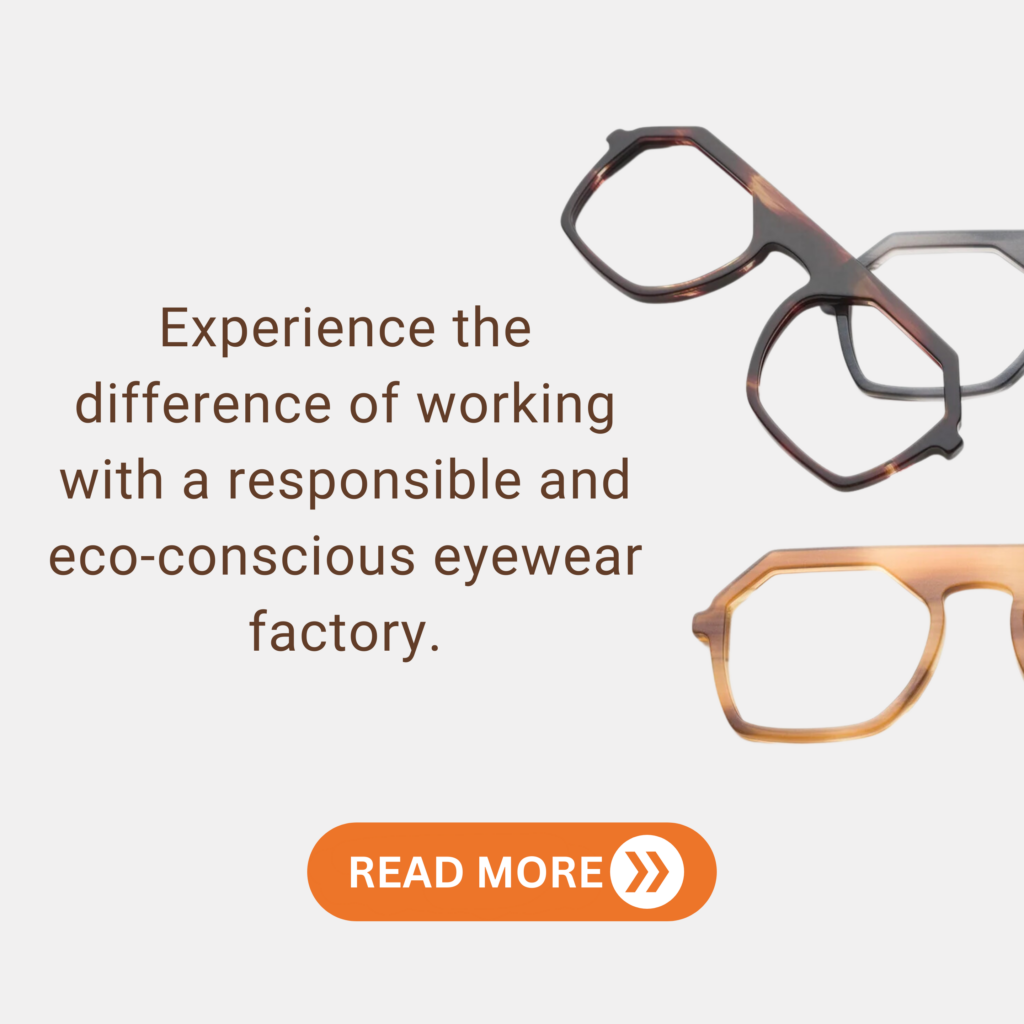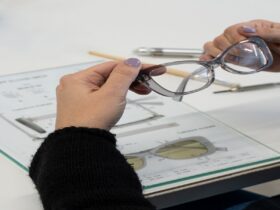In recent years, there has been a surge in interest for eco-friendly products, and eyewear is no exception. With the eyewear industry constantly evolving, there is a growing demand for sustainable, environmentally-conscious brands. This guide will walk you through the essential steps of creating an eco-friendly eyewear brand, focusing on eco materials and sustainable practices.

Identify your niche and target market
Before launching your eyewear brand, identify the niche you want to focus on and define your target market. Focus on sustainability and eco-friendliness as your main selling points, and cater to a specific audience interested in making environmentally conscious choices.
Develop a unique brand identity
Create a memorable brand identity that reflects your eco-friendly values. This includes selecting a name, logo, and color scheme that represent your brand’s commitment to sustainability. Establish a strong mission statement highlighting your dedication to using eco materials and promoting sustainable practices.
Choose eco-friendly eyewear materials
Selecting eco-friendly materials is crucial for creating an environmentally-conscious eyewear brand. Some popular eco materials include:
Biodegradable acetate: This material is made from renewable resources, such as wood pulp and cotton fibers. It is biodegradable and eco-friendly.
Recycled metals: Opt for recycled metals like stainless steel, aluminum, or titanium, which have a lower environmental impact compared to virgin metals.
Wood and bamboo: These natural, renewable materials offer a unique aesthetic and are biodegradable.
Recycled or plant-based plastics: Use plastics made from recycled materials or plant-based alternatives like PLA (polylactic acid), which are more sustainable than traditional petroleum-based plastics.
Collaborate with sustainable suppliers and manufacturers
Partner with suppliers and manufacturers who share your commitment to sustainability. This includes sourcing eco materials, using environmentally-friendly production methods, and ensuring fair labor practices. Be transparent about your supply chain and hold your partners accountable for their environmental impact.
Design innovative, eco-conscious products
Work with an in-house design team or collaborate with external designers to create eyewear that combines style, functionality, and sustainability. Focus on innovative designs that showcase your eco materials and make your brand stand out in the market. Offer a variety of styles and designs to cater to different tastes and preferences.
Implement sustainable production processes
Adopt sustainable production processes that minimize waste, reduce energy consumption, and lower carbon emissions. This may include:
Water recycling: Reuse water in production processes to reduce overall water consumption.
Energy efficiency: Implement energy-efficient technologies and practices in your production facility to reduce your carbon footprint.
Waste management: Recycle waste materials and work with certified recycling facilities to minimize landfill waste.
Prioritize packaging and shipping
Choose eco-friendly packaging materials, such as recycled or biodegradable cardboard, and avoid using excessive packaging. Opt for sustainable shipping methods, like sea freight, which have a lower carbon footprint compared to air freight. Encourage customers to recycle or reuse packaging materials.
Engage in ethical marketing and communication
Build trust with your target audience by being transparent about your sustainability efforts and ethical practices. Use your website, social media, and marketing materials to share your brand’s eco-friendly initiatives, certifications, and achievements.
Foster a culture of sustainability within your company
Encourage a company-wide commitment to sustainability by implementing green policies and practices in your workplace. This includes reducing energy consumption, promoting recycling, and providing ongoing education on sustainability and environmental issues.
Partner with eco-conscious organizations and initiatives
Collaborate with environmentally-focused organizations and initiatives to further promote sustainability within the eyewear industry. This can include participating in events like Fashion Revolution or supporting causes that align with your brand’s eco-friendly values.
Creating an eco-friendly eyewear brand requires a commitment to sustainability at every stage of the process, from selecting eco materials and designing innovative products to implementing green production processes and fostering a culture of sustainability within your company. By prioritizing environmental responsibility and aligning your brand with the growing demand for sustainable products, you can differentiate your eyewear brand in the market and appeal to a growing audience of environmentally-conscious consumers. As you embark on this journey, remember that transparency, innovation, and collaboration are key to establishing a successful, eco-friendly eyewear brand that makes a positive impact on the world.









Leave a Reply